The four seasons of your menstrual cycle & how to make the most of them
The menstrual cycle – understanding your four ‘inner seasons’, how they affect you, and how to navigate them
The four phases of the menstrual cycle are often likened to seasons of the year. Although metaphorical, you might find the nod to the seasons and the similarities within the menstrual cycle surprisingly tangible.
Those of us who menstruate will have on average around 450 periods in a lifetime. That’s 6,5 years we spend bleeding! The complex circle of events can also impact your mind, mood, emotions, and general well-being.
None of us wants to constantly be reminded about our menstrual cycle. However, trying to understand the complexities we experience on a monthly basis might help us make some sense of it all, as well as figure out how best to manage our cycle.

The importance of tracking the seasons of your menstrual cycle
Although similar in biology and hormonal mechanisms, we are all beautifully different. This stands true for our cycle too. Menstrual cycle length varies from person to person, ranging from 21- 40 days long. The average menstrual cycle is mostly documented as 28 days, and variation is mainly down to the timing of ovulation.
Bearing in mind this range in cycle length, it’s important to get to know your normal through tracking.
Tracking the seasons of your menstrual cycle is not only practical in terms of predicting when your period should arrive. It might also help manage expectations so you can do a little life planning around your cycle.
Using a tracking app is a great way to start recognising patterns that happen in your cycle. The patterns can be physical symptoms or how you are feeling mood-wise. You may of course prefer to chart this yourself, using a good old-fashioned calendar or diary.
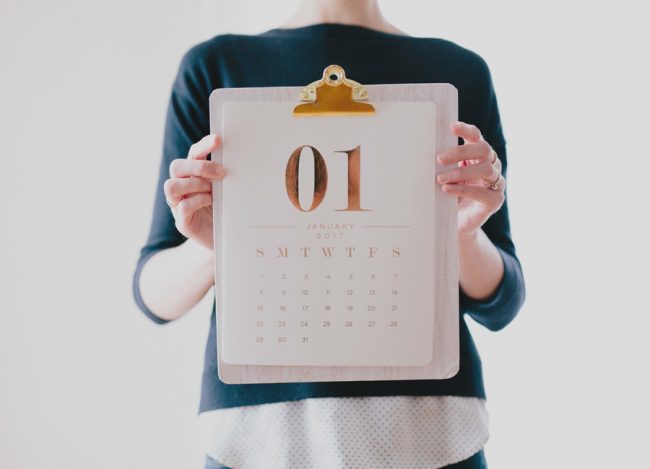
To give you a rough idea of the four inner phases, in an average 28-day cycle it would mean:
- the inner winter is approximately day 1 to day 7
- the inner spring is approximately day 8 to day 14
- the inner summer is approximately day 15 to day 21
- the inner autumn approximately day 22 to 28
We will soon delve into and explore the ins and outs of what can happen to us during each of our inner seasons, from a biological, practical and emotional perspective. But first, let’s make some sense of the driving forces behind the hormone commotion.
Understanding the menstrual cycle – the terminology and hormones
Even for those of us with medical training, it’s easy to be bamboozled by the likes of luteinizing and follicle-stimulating hormones, not to mention the corpus luteum! There’s no getting away from the fact that this science is not straightforward. Should you feel inclined to try and unravel the conundrum and meander the hormonal pathway, let this bit of basic biology be your guide.
What are the different menstrual hormones and what do they do?
There are two main groups of hormones that coordinate and control your menstrual cycle as well as prepare for a potential pregnancy. They can be grouped according to where they are secreted from.
Pituitary hormones
The follicle-stimulating hormone and luteinizing hormone (often known as FSH & LH) are released from the Anterior Pituitary gland. This pea-sized gland is located at the base of your brain. Both FSH and LH work on the ovaries to develop the follicles which contain the immature eggs. Each menstrual cycle will generate approximately 10 – 12 follicles. During ovulation one of the follicles will release a mature egg. The rest will be reabsorbed into ovarian tissue.
Ovarian hormones
Oestrogen and progesterone are released from the ovaries. Their job is to get the uterus prepared for a potential pregnancy.
We mustn’t forget testosterone. Although it is the primary male sex hormone, females also produce small amounts of testosterone. Testosterone helps to keep bones healthy as well as make new blood cells, nurture libido, and regulate our mood. The mix of testosterone and oestrogen together helps with the growth, maintenance, and repair of reproductive tissue.
Other useful menstrual terminology
- Endometrium is the lining of your womb.
- Follicle is a fluid-filled sac that houses the egg.
- Corpus luteum is the structure left behind after the egg bursts from the follicle. This process is what we call ovulation.
So, let’s explore what’s in store during the seasons of the menstrual cycle. Menstruation or period, follicular, ovulation, and luteal phases are all alternative names for these timelines.
Your inner Winter – period
When: days 1-7 (approximately).
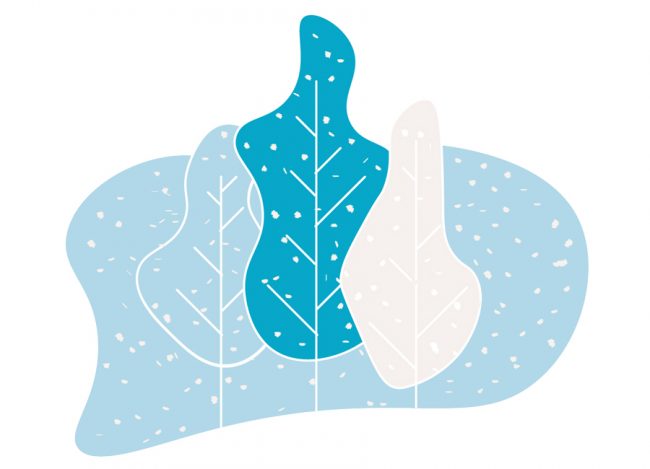
What is happening in your body during the menstruation phase, aka winter?
Hormones – Levels of both oestrogen and progesterone drop significantly!
Endometrium – unless you’re pregnant, the lining of the uterus sheds during your period.
Bleeding and menstrual flow – Hello period! Yup time to get your Mooncup® out! The first day of your period is counted as day 1 of your menstrual cycle. Day 1 up to day 5/8 of your cycle, is when you will be bleeding. However, this time frame will of course vary from person to person. Your period can last from 3 to 10 days, but it will usually last for about 5 days.
Bleeding is usually heaviest in the first few days, though this is slightly different for everyone. While on average you lose approximately 30 to 72ml (5 to 12 teaspoons) of blood during one period, some will bleed more heavily than this. As with most natural bodily functions, period blood can be affected by age, diet, environment and lifestyle. The appearance and colour of menstrual blood can also vary during a period.
The Mooncup menstrual cup collects your period rather than absorbing it. So, whatever your flow – heavy or light, you are always good to go with the Mooncup in tow. The natty little measurement markings on the body of the Mooncup mean you can gauge your menstrual fluid loss better than ever. Particularly helpful if you have very heavy periods in which case, if you have not already, it’s always worth a chat with your doctor.
Passing blood clots during your period is not unusual. These consist of a mixture of blood cells, tissue from the lining of the uterus, and proteins in the blood. However, as a guide, if the clots are bigger than a 10-pence coin or you have any concerns, it’s always best to seek medical advice.
Physical symptoms of the winter phase
Period fatigue
Feeling Tired? No wonder we call this season of the cycle ‘winter’. Due to the drastic decline in oestrogen and progesterone at this time, many feel what’s sometimes called period fatigue.
No wonder you might have the urge to hibernate, the body has a lot to deal with at this time. With the possible aches and pains and the need to manage bleeding at all hours, there’s a lot that can disturb your 8-hour kip. At a time when you really need those z’s, it can all get a bit TOO MUCH!
Duvet days this weekend are strictly allowed. Don’t feel guilty for that extra lie-in at the weekend or for watching an entire season of your fave Netflix series parked safely on the sofa. Rest up and conserve your energy- it’s winter after all!
Discomfort
Period pain varies hugely but is common. You may experience anything from severe lower abdominal cramping to that dull achy muscle feeling in the legs and back. While it’s normal to feel uncomfortable, severe pain should be discussed with your doctor.
In terms of discomfort, there are things that can help. Other than the usual over-the-counter pain relief drugs, you may find a good old-fashioned hot water bottle helps relieve this kind of pain- especially on those cold wintery days. Alternatively, immerse yourself in a hot bath laced with your favourite aromatherapy oil.
Low energy
Energy is generally at a low ebb right now, so breathe and take in the view. Give yourself a break. If your energy is slow on certain days – accept it. Try and do those unavoidable tasks on the days your energy is higher.
Iron deficiency
Very heavy periods over time can lead to iron deficiency anaemia. Don’t ignore signs like feeling extra tired (this may be more apparent during your period), dizziness, your skin looking more pale than usual, shortness of breath, and fast heartbeat or palpitations. If in doubt or concerned, make an appointment with your doctor.
Vaginal infections
Vaginal pH levels can become unbalanced during a period. It’s not uncommon for infections such as Bacterial vaginosis or Candida (thrush) to occur around this time or just after.
Emotional symptoms and how to be kind to yourself during your menstrual winter
Relief
Now that the PMS (premenstrual symptoms) have likely subsided, you may feel a sense of relief when your period starts. Phew, there’s a period positive!
Irritated and grouchy?
Having an unusually short fuse during your period is normal. The simplest of things can become a chore. Put things into perspective and remind yourself that you may not feel in the best form for a reason.
Unsociable?
Back to that hibernation den, or at least clear the calendar where possible. Even the most sociable of us may feel introverted and introspective this week. But alone time can be a good thing, right? Space to reflect or catch up on that novel. Instead of going out for dinner perhaps make a point of cooking yourself healthy nutritious meals packed rich in iron. Try not to cave in on the cravings for carbs. That said, surely some CHOCOLATE can gate-crash this party!
Your inner Spring – the follicular phase
When: Days 8-14 (approximately). Your inner spring phase relates to the time before the release of an egg, so usually just after your period and before ovulation. Technically, the follicular phase starts the day you start your period and ends on ovulation.
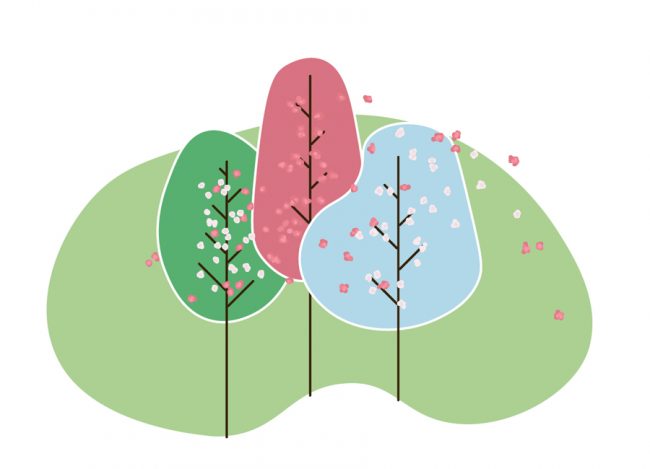
What is happening in your body during the spring phase of your cycle?
Hormones – Levels of FSH start to rise slightly, meaning the egg-containing follicles start to develop. As the follicles mature they then produce oestrogen which causes a rise in LH.
Your endometrium – Some rebuilding of the uterus lining is taking shape now. Becoming thick and spongy, it’s often likened to a kind of nest preparing itself for a potential pregnancy.
Physical symptoms of the follicular phase, aka spring
As your body is on its marks for ovulation, your vaginal discharge can feel wetter. Your breasts may start to feel bigger and if you’re lucky, your skin can become clearer and fresh looking.
Emotional symptoms of the spring phase of your cycle
Whoop whoop! New beginnings, spring is in the air. The rise in oestrogen starts to lift your mood and you might say- you’re back in the game. With renewed confidence you are likely to start feeling more excited about the week ahead- so go forth and prosper!
Sociable
When your period has finished, fun with friends is back on the cards as you begin to feel more sociable. Time to emerge from the den and maybe even get your glad rags on.
Productive
A wave of energy following your period might even bring out your creative streak and turn that spark into a full beam ahead. With that springtime vibe in tow, new ideas can start to evolve so make the most of it while you can.
Increased Libido
Coinciding with the rise in LH, your sex drive may increase as you approach ovulation.
Your inner Summer- the ovulatory phase
When: days 15-21 (approximately). The ovulation happens around 14 days before the beginning of your next period.
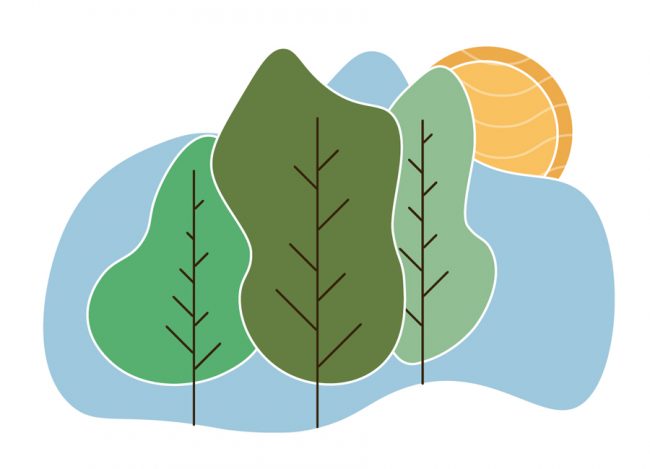
What is happening in your body during the summer phase of your cycle?
Hormones – After all that important prep work in the spring, oestrogen peaks now. This stimulates the pituitary gland to release LH and FSH. The brief but powerful surge in the luteinising hormone (LH) triggers the dominant follicle to break open. Together with a little help from testosterone, this mighty burst releases the egg. And voilà – we have OVULATION!
The process is rather short-lived – usually up to 35 hours after the beginning of the LH surge. When the egg is not fertilised, it disintegrates into the lining of the uterus and comes out during your next period. Meanwhile, progesterone is less busy and keeps a low profile.
Endometrium– The lining of your uterus is at its thickest right now and ready should the fertilised egg land.
Physical symptoms of the summer season of the menstrual cycle, aka ovulation
Fertile!
If relevant to you, even though the ovulation happens fairly quickly the egg does not hang around for long. However, the fertile window is bigger than it may seem. You may need to do a little maths here as sperm can live in the reproductive tract for approximately 5 days meaning any sex in the days around ovulation can still lead to pregnancy.
It’s not always obvious when ovulation actually happens. This means the right birth control for you is an important consideration throughout your cycle.
If you are trying to conceive, you may find it helpful to detect your LH surge. Yep, you can pee on a stick for this too! You may notice your cervical discharge being clear and stretchy, a bit like the texture of egg whites.
Ovulation pain sometimes called ‘mittelschmerz’
‘Mittelschmerz’ comes from German words meaning ‘middle and pain’. You may get cramping or discomfort that is often on one side of the lower tummy or pelvis. This usually means that the ovary has just released an egg. Ovaries usually take turns to ovulate, so if you do experience mittelschmerz, don’t be surprised if the pain swaps sides each month! You might also notice a little vaginal bleeding at this time. Ovulation pain is fairly common during the menstrual cycle. That said, if ever concerned- as always, its best to check it out with your doctor.
Basal body temperature
During ovulation, there is a slight rise in body temperature, which will be familiar to those who practice natural family planning.
Emotional symptoms of the summer phase of your cycle
Hormones are bountiful and positivity reigns at this time! That steep oestrogen peak you just summited can make you feel more confident and attractive to others. Comfortable in your own skin, a sense of focus and connection helps you to engage and feel excited about learning new things. Energy is on a high, so take advantage and go to that Zumba class after work. Embrace the outdoors and get physical while you have this superpower.
Your inner Autumn – the luteal phase
When: days 22 to 28 (approximately). The Autumn happens after ovulation.
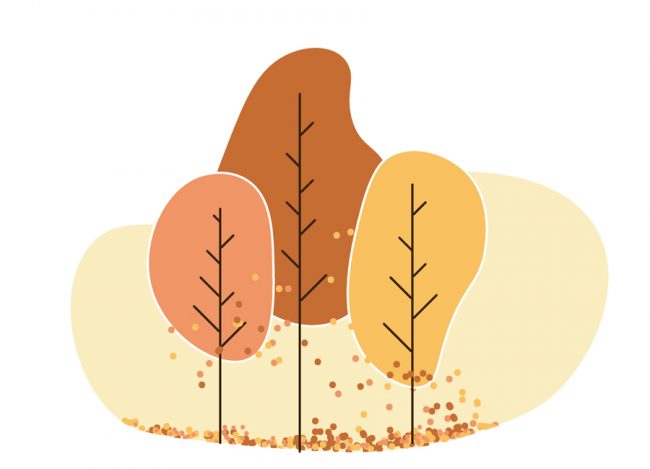
What is happening in your body during the autumn phase of your cycle, aka the luteal phase?
Hormones & endometrium – After the egg has left the follicle during ovulation, your corpus luteum starts to form from the materials that made up that follicle. It then produces oestrogen and progesterone. Progesterone is the uterus’s best friend right now and works hard to thicken and maintain the womb’s lining just in case a fertilised egg plants itself.
If fertilisation of the egg doesn’t happen, your corpus luteum will start to disintegrate, which takes approximately 10 days from ovulation. With the slow demise of the corpus luteum, progesterone declines and your uterus lining won’t go through the necessary changes needed to support pregnancy. Instead, you’ll shed the lining during your period when winter prevails once more.
Physical symptoms of the luteal phase
In other news, vaginal discharge can start to become sticky. Your breasts might be tender and slightly swollen. If you’re prone to breakouts, now’s the time those spots will appear…
PMS – Premenstrual Syndrome
In America, they call autumn ‘fall’, which makes much sense from a tree or plant perspective. It also helps when trying to understand our menstrual cycle. Nearing late autumn, hormones dramatically fall, leaving us a little bereft of the positive stuff of the summer.
No wonder your mood can take a U-turn. Premenstrual syndrome (PMS) is REAL for many of us a week or so before a period. It can be experienced with varying symptoms, forms and to different degrees. Do some of the symptoms below ring true for you? Perhaps you can add to the list, but hopefully can also cross a few off.
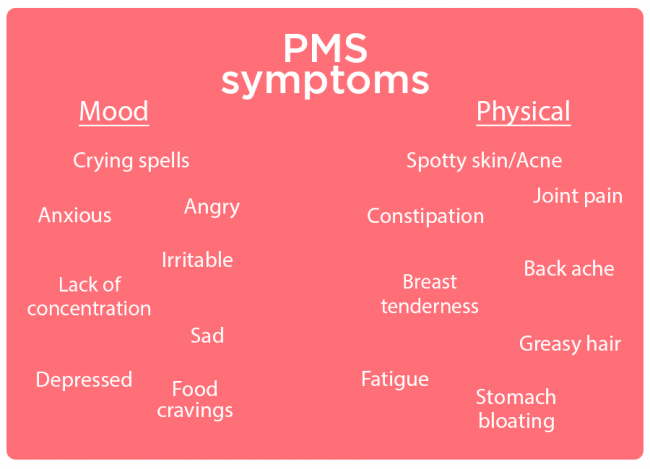
PMDD – Premenstrual dysphoric disorder
Although less common than PMS, Premenstrual dysphoric disorder (PMDD) is a severe, sometimes debilitating extension of premenstrual syndrome (PMS) that can seriously affect your quality of life.
Be kind to yourself during the luteal phase
If feeling dragged down and out of sorts, the days can seem long. The smallest criticism may seem like a giant slap in the face. Sure, riding out this wave can be much more comfortable under the duvet, but maybe we can mitigate. With potentially a lot going on in autumn, it’s prime time to look after mind, body and soul. How can we make the most of the weather and deal with the storm clouds and downpours? Time to take on some healing allies…
Maisie Hill talks about the journey from ’hormone hell to harmony’ in her book ‘Period power’ – about how to empower yourself during the different seasons. This stage of your cycle you may feel more introspective, but this can also bring clarity of thought. Pay attention to what your feelings and emotions are telling you. Use what energy you have wisely and accept help from others.
Taking care of yourself might sound like common sense and a nice thing to have to do. In reality, during autumn our instincts might be telling us otherwise. We may think we need three espressos before 11 AM to be on our game. Or that we deserve that mountain of chocolate in the evening. But are we doing more harm than good? Have a look at a few tips, that can help you thrive on the Autumnal days.
Self-care tips for your menstrual autumn
- Think about what you are eating. Try to eat healthily. This doesn’t need to be complex and can be easier than you think. Think more along the lines of natural foods like fruits, salads, and homemade soups. VitaminB6, magnesium, vitamin D and calcium have been linked to helping some PMS symptoms, such as fatigue and bloating. It’s good to cut down on processed foods as these often contain vast amounts of sugar. It’s old news that too much sugar is not healthy. But it is worth bearing in mind that there is a close relationship between menstrual cycle hormones and their impact on blood sugar levels and insulin sensitivity. Though this is perhaps a blog post for another time!
- Keep hydrated. Don’t forget to grab your reusable water bottle in the morning! Pay attention to how many times you refill or DON’T. Cut down on the caffeine. Tea, coffee and energy drinks might be disguised as our saviours during the fall, but the caffeine intake and PMS.
- Limit the alcohol. The time might regularly feel like wine o’clock, but there’s increasing and compelling research linking booze and an increased risk of PMS. If you haven’t already, you might want to check out some of the surprisingly sensational botanical alcohol alternatives out there! Mocktails anyone?
- Exercise. It’s scientific as well as common knowledge that physical activity is key to helping reduce stress and anxiety. It can improve sleep and has been documented to relieve pain. Keep moving, even if it’s a walk around the local park or stretching muscles you didn’t know you have on the comfort of your living room rug. Better still, pump up those endorphins as well as the VOLUME and rock out to your favourite anthem on the kitchen dance floor.
- Remember to relax. Having symptoms of PMS does not automatically turn off the rushing around button that may be part and parcel of your busy life. But don’t forget to take your foot off the pedal now and again. Where possible, take stock and stop for a bit. Whatever relaxes you, be it a massage, meditation or mindfulness, try to unwind whenever you can.
These are only some of the things you can gift yourself, but you know what you need. Just listen to yourself – you deserve it!
So, there you have it, a snapshot of what your menstrual cycle might look like in more ways than one. Being a bit more in the know could give you the tools to best manage your menstrual winters, springs, summers and autumns – for years to come.
Own your period with the Mooncup®
You only need the one Mooncup menstrual cup to be prepared for your menstrual winter, when it comes around. No more discovering you’ve run out of tampons or pads, no more last-minute dashes to the shops.
The Mooncup also collects your period blood instead of absorbing it, so it doesn’t dry you out or leave fibres behind like a tampon would. The Mooncup respects your natural balance.
Find out more about the Mooncup® and get yours here.
Did you know that we offer a unique Mooncup Advice Service run by medical health professionals, like Nicky? You can contact them with any more questions about using the Mooncup® at [email protected].
Did you enjoy this article? Head to this page’s footer to sign up to our mailing list to be the first to hear about our blogs!






